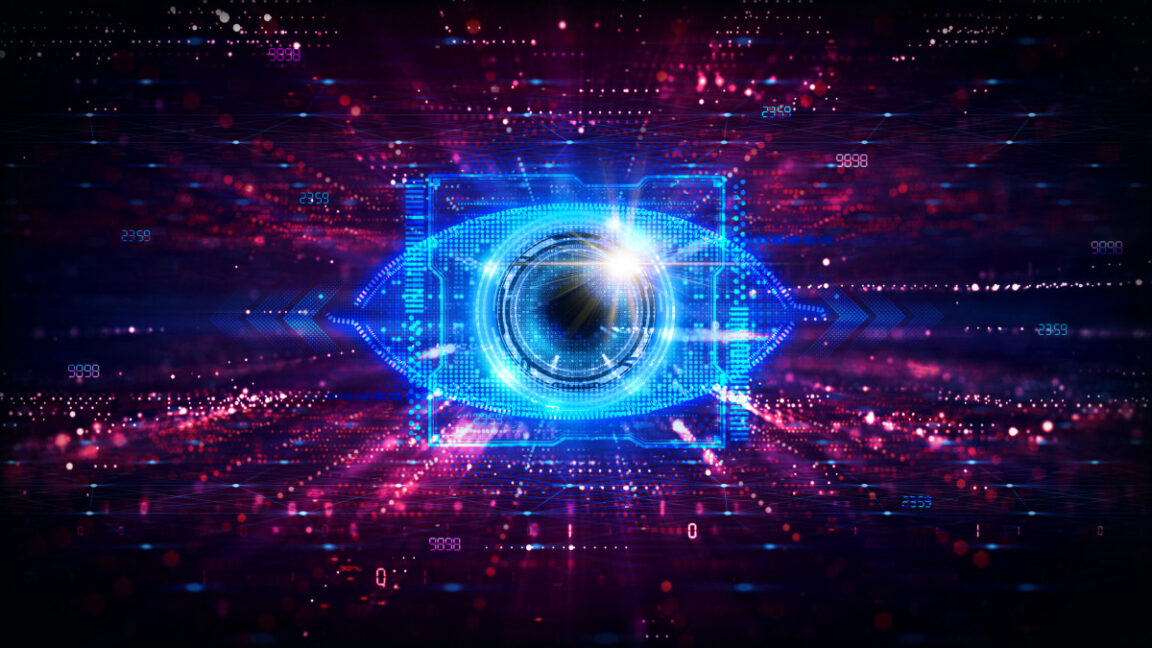www.businessinsider.com
"Sunrise on the Reaping" came out in March 2025. Lionsgate/Scholastic 2025-03-24T22:14:25Z SaveSaved Read in app This story is available exclusively to Business Insider subscribers. Become an Insider and start reading now.Have an account? "Sunrise on the Reaping" by Suzanne Collins was released on March 18.The book is about Haymitch Abernathy, but it contains details on the entire "Hunger Games" series.The rest of this article contains spoilers for the "Hunger Games" series.Fans of Suzanne Collins' "Hunger Games" series got to revisit the world of Panem, as the author released the prequel "Sunrise on the Reaping" on March 18.The novel tells the story of Haymitch Abernathy's experience in the Hunger Games, giving readers new insight into Katniss Everdeen and Peeta Mellark's mentor.Although it focuses on Haymitch, "Sunrise on the Reaping" is full of information about the entire "Hunger Games" series, from lore about Katniss' family to backstory on how the revolution came to be.Here are some of the details from the novel you might have missed. Warning: There are heavy spoilers for the entire "Hunger Games" series ahead.The book is full of information about Katniss Everdeen's familyAlthough Katniss is the protagonist of the original "Hunger Games" trilogy, the books contain limited information about her extended family. Her parents' names are not even mentioned in the books.Collins expands on the Everdeen family's history in "Sunrise on the Reaping," revealing that Katniss' father, Burdock, was one of Haymitch's best friends and that he was already dating Asterid, Katniss' mother, at the time.Haymitch's interactions with Burdock are peppered with nods to Katniss, showing the reader how similar Katniss was to her father. For instance, Burdock takes Haymitch into the woods, where he sings and shows Haymitch how to get apples and set hunting snares. Katniss shares her father's hunting skills, singing talents, and comfortability in the woods, which ultimately helped her survive her first Hunger Games. Jennifer Lawrence as Katniss Everdeen in "The Hunger Games." Lionsgate Katniss' parents' long-awaited names also reflect the ones they gave their children; both Asterid and Burdock are plants, just as Primrose and Katniss are.In addition, Haymitch mentions in the text that Burdock is distant cousins with his girlfriend Lenore Dove Baird, a member of the Covey family.The Covey appears in Collins' "The Ballad of Songbirds and Snakes," as they are the musically-inclined family of Lucy Gray Baird, who wins the Hunger Games and has an ultimately doomed relationship with Coriolanus Snow. Readers suspected Katniss might be related to Lucy Gray the other female victor from District 12 but "Sunrise on the Reaping" confirms it.Katniss' paternal grandmother is likely Lucy Gray's cousin, Barb Azure Baird, as Haymitch sees graves for Lucy Gray and her other cousin, Maude Ivory Baird, when visiting Lenore Dove's resting place.Katniss and Peeta's fathers share an important interactionDuring the reaping for the Hunger Games, one of the boys reaped from District 12, Woodbine Chance, flees, and the Peacekeepers shoot him in response. They order everyone to the ground, and most people in the area obey, though Otho Mellark, Peeta's father, freezes.Burdock gets Otho to lie down on the ground by punching him in the knee, saving him from being harmed by a Peacekeeper.If Otho had died in the shooting, Peeta would never have been born, so he wouldn't have been there to fight alongside Katniss in the games and the revolution. In fact, Katniss likely wouldn't have made it to the Hunger Games without Peeta, as he saved her from starvation by giving her bread after her father died.The small interaction between their fathers at a pivotal moment in Haymitch's life eventually leads to Peeta, Katniss, and Haymitch uniting decades later.Haymitch's nickname for Katniss holds special meaningIn the original "Hunger Games" trilogy, Haymitch often refers to Katniss as "sweetheart," which she takes as a condescending nickname that later becomes a term of endearment. However, "Sunrise on the Reaping" reveals the pet name was always a form of affection for Haymitch.Haymitch competes in the Hunger Games with three other contestants from District 12: Wyatt Callow, Maysilee Donner, and Louella McCoy.Louella is three years younger than Haymitch, and he shares in "Sunrise on the Reaping" that he has long called her "sweetheart" as an inside joke, referencing a crush she had on him when she was just 5. Woody Harrelson as Haymitch in "The Hunger Games." Lionsgate The pair were close and planned to be allies in the Hunger Games, but Louella died in a chariot collision before even reaching the arena. As Haymitch mourns her, he refers to her as "my one and only sweetheart."In the book's epilogue, Haymitch says that Katniss reminded him of Louella in the years after her father died, as she wore her hair in braids like his old friend. He said the resemblance was so strong in his mind that "the nickname couldn't help but slip out" when he became Katniss' mentor for the Hunger Games, explaining why he called her sweetheart throughout the trilogy.Haymitch also sits in some katniss during his games, foreshadowing her presence in an arena.Haymitch's games offer more insight into the plot of 'Catching Fire'"Sunrise on the Reaping" reveals Haymitch's long history with characters like Plutarch Heavensbee, Beetee Latier, Mags Flanagan, and Wiress and his efforts to break the arena in his own games. Those experiences shed light on how long Haymitch and other victors had been waiting for someone like Katniss to help them bring down the Hunger Games arena, as they do in "Catching Fire." However, small moments in the text also hold significance for "Catching Fire."For instance, Mags and Wiress appear in "Catching Fire," competing with Katniss. In the text, Mags is said to be weakened from a stroke, while Wiress' mind seems damaged. Katniss assumes they are both in poor health because they fought in the Hunger Games.Mags and Wiress are Haymitch and the other District 12 tributes' mentors in "Sunrise on the Reaping," and both are physically and mentally sound when he meets them. After he wins his games, Haymitch discovers that they were both tortured because they attempted to help him break the arena, spotting Mags in a wheelchair and Wiress mumbling to herself. Their rebellious activities caused them lasting damage, not the games themselves.A moment between Plutarch and Haymitch also allows him to protect Katniss later. When Haymitch is on his Victory Tour, Plutarch pulls him into an attic in District 11 for a private conversation, telling him, "The attic is the only spot in the entire Justice Building that isn't bugged." Plutarch Heavensbee and Haymitch Abernathy. Lionsgate / Murray Close In their conversation, Plutarch tells Haymitch he will keep fighting for a revolution and intends to find someone just like Haymitch to make it happen eventually, adding that it wouldn't hurt to "find" an army to fight the Capitol.In "Catching Fire," Haymitch takes Katniss and Peeta to the same attic when visiting District 11 during their Victory Tour, allowing Katniss to confide in them about threats President Snow made against her family. Katniss also becomes the revolutionary Plutarch imagined, and the citizens of the long-forgotten District 13 are the army he finds, reflecting the conversation he and Haymitch had 25 years earlier.Collins nods to the numbers of the Quarter Quell with the gamesHaymitch is a tribute in the 50th Hunger Games, which is a Quarter Quell.Quarter Quells have added stakes compared to a typical Hunger Games competition, though those new rules vary every 25 years. For the 50th Games, the number of children forced to compete was doubled, so four kids were reaped from each district.The games were designed to have 48 competitors, but 50 tributes are actually competitors for them as two tributes from District 12 get replaced. Haymitch is forced into the games after Peacekeppers murdered Woodbine, and after Louella dies, she is replaced with a body double.Haymitch's game token is a metaphorEvery child who competes in the Hunger Games can bring a token from home into the arena, though it cannot be used as a weapon.Haymitch brings a necklace Lenore Dove made him that doubles as a flint striker, allowing him to make fire and subtly defy the Capitol by having a weapon on hand. He uses the striker to set off a bomb during the games, though his attempt at breaking the arena doesn't work.Collins often refers to Katniss as the "spark" that allows the fire of revolution to take hold in Panem, nodding to the theme with the title of "Catching Fire."Haymitch walked a similar path to Katniss, and if a few things had gone differently, he may have started the fire. Instead, like his flint striker, Haymitch helped create the sparks of revolution that a generation after him turned into flame.The mockingjay pin's origin storyAny "Hunger Games" fan knows the mockingjay pin was Katniss' token in her first games, later serving as a symbol of the revolution with which Katniss is synonymous. Mockingjays were an accidental creation in Panem, as jabberjays, which the Capitol used to spy on rebels in the first war, mated with mockingbirds to create them.In "The Hunger Games," Madge Undersee, the mayor's daughter, gives Katniss the pin and tells her in "Catching Fire" that it originally belonged to her aunt, Maysilee Donner, who died in the 50th Hunger Games.Haymitch reveals in "Sunrise on the Reaping" that the pin belonged to Maysilee's grandmother. Tam Amber, a member of the Covey who first appears in "The Ballad of Songbirds and Snakes," turned Maysilee's pin into a mockingjay as a gift for her from her father. A mockingjay poster. Lionsgate / Hunger Games Catching Fire Trailer However, to Lenore Dove's fury, Maysilee never wore the pin and even asked Tam Amber to change its design. Before the games, she confessed to Haymitch that she thought the birds were "unnatural" because they were part-mutt."Some people think that's a victory in itself. Way they escaped the Capitol and survived," Haymitch told her. Maysilee told him she would reconsider wearing it if she survived the games, given the message.Maysilee never gets to wear the pin, but Katniss does, bringing the moment full circle.'Sunrise on the Reaping' foreshadows Katniss' nightlock stuntIn the climax of "The Hunger Games," Katniss and Peeta fight to become the final two tributes during their games, as the gamemakers promised two tributes from the same district could be co-victors. They announce the rules changed again, trying to force Katniss and Peeta to fight to the death. Instead, Katniss and Peeta agree to kill themselves with nightlock berries.The gamemakers ultimately stop them, crowning both Katniss and Peeta victors to Snow's displeasure. Josh Hutcherson as Peeta and Jennifer Lawrence as Katniss in "The Hunger Games." Lionsgate "Sunrise on the Reaping" reveals that the seconds in which it seemed like Katniss and Peeta would poison themselves were likely agonizing for Haymitch, as his girlfriend Lenore Dove died by eating poisoned gumdrops left for her by agents of the Capitol. Her death was designed to punish Haymitch for his attempts at breaking the arena.Though he tried to make her spit them out, it was too late, and Lenore Dove died in front of him. Katniss and Peeta lived, but the incident must have given Haymitch a horrifying sense of deja vu.In addition, Haymitch mentions during his time in the arena that he saw "red" berries with "little black dots on their skins" that are poisonous. They were likely nightlock, offering another parallel between Haymitch and Katniss' experience in the Hunger Games.The prequel brings new meaning to a song from 'The Ballad of Songbirds and Snakes'After Haymitch's mother and brother die, members of their community gather for a funeral. During the ceremony, Burdock sings "The Old Therebefore." The song's lyrics reference death, and Haymitch uses the phrase "the old therebefore" when discussing his life ending soon in the novel's epilogue.The song offers a poignant moment for Haymitch, but it should also be familiar to fans of "The Ballad of Songbirds and Snakes." Rachel Zegler as Lucy Gray Baird in a still for "The Hunger Games: The Ballad of Songbirds and Snakes." Murray Close/Lionsgate In the first prequel to the series, Lucy Gray Baird sings the same song when mutant snakes swarm her. Although Lucy Gray had an affinity for snakes, she knew these were dangerous because the Capitol made them and they had killed other tributes. She likely thought she would die when she started singing the song, though she ultimately survives the encounter.It's possible "The Old Therebefore" is a long-standing funeral dirge in District 12 or for the Covey family, which is why Burdock and Lucy Gray sing it when confronted with death. It's also possible it became a funeral song after Lucy Gray sang it during the Hunger Games, leading Burdock to sing it years later.In addition, in the same funeral scene, the attendees raise three fingers to their lips before raising them to the sky, as Katniss does many times throughout "The Hunger Games" trilogy to honor the dead.'Sunrise on the Reaping' clears up an element of the 'Mockingjay' epilogueCollins wrote an epilogue to "Mockingjay," offering readers a glimpse of the life Katniss, Peeta, and Haymitch rebuild in District 12 after the war. The epilogue mostly focuses on Katniss and Peeta finding their way back to each other, but it also mentions that Haymitch raises geese, which seems somewhat random."Haymitch drinks until the liquor runs out, and then raises geese until the next train arrives," Katniss says in "Mockingjay." "Fortunately, the geese can take pretty good care of themselves."However, "Sunrise on the Reaping" reveals that the geese are a way to honor Lenore Dove, who raised the birds in District 12. She also uses them as a metaphor for her love with Haymitch, telling him before he leaves for the Hunger Games, "Just like my geese, I mate for life. And then some. Forever."In the epilogue of "Sunrise on the Reaping," Haymitch says that Katniss brought him geese eggs after he shared with her and Peeta about his long-gone love. He raises them to feel connected to her, letting them spend time in Lenore Dove's meadow."Lenore Dove likes it best there, and I'm content where she's content," Haymitch said of the meadow. "Like the geese, we really did mate for life."The novel confirms a long-held fan theory about the games"Hunger Games" fans have been suspicious for years that the Hunger Games are sometimes rigged, particularly because of the plot of "Catching Fire."It seemed all too convenient that Katniss had to return to the arena just a year after she openly defied the Capitol, giving Snow the opportunity to eliminate her."Sunrise on the Reaping" gives even more credence to the theory that a rigged reaping is possible, as Haymitch's name isn't initially called. After the Peacekeepers shoot Woodbine, Haymitch is forced to be a tribute for District 12.Nothing about the Hunger Games is fair, but Haymitch's experience makes clear that the random selection element of the competition isn't always real, as does the fact that Snow replaces Louella with a body double instead of announcing her death ahead of the games. Likewise, Snow arranged for Beetee's son, Ampert, to be reaped as punishment for Beetee's seditious acts. Jennifer Lawrence and Josh Hutcherson as Katniss Everdeen and Peeta Mellark in "The Hunger Games: Catching Fire." Lionsgate Films After Haymitch sees that Mags and Wiress have been tortured for aiding him in his attempts to break the arena, he worries for his family, thinking, "Are they already dead? Or will Snow arrange, as he did with Beetee, for a time when I can personally witness their suffering?"When Katniss returns to the arena in "Catching Fire," she does so along with Beetee, Wiress, and Mags, bringing Haymitch's fears to fruition."Sunrise on the Reaping" sends the message that rigging or illegal reaping is common practice for Snow when targeting his enemies, so it's more likely than not he orchestrated the 75th Quarter Quell specifically to kill Katniss and other tributes he saw as dangerous.










